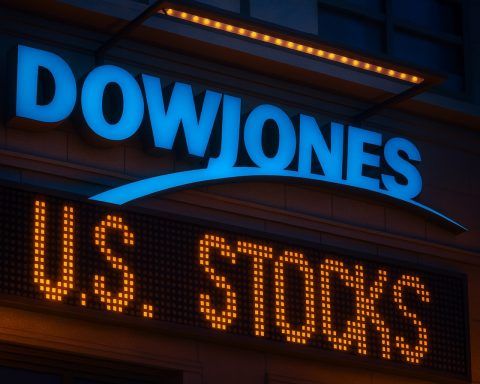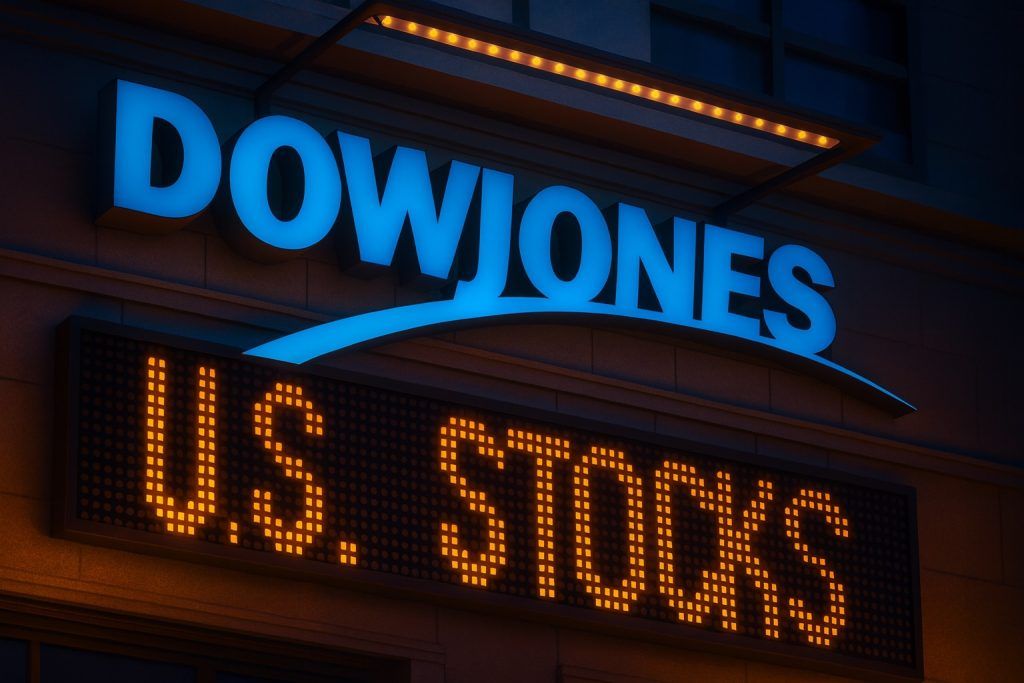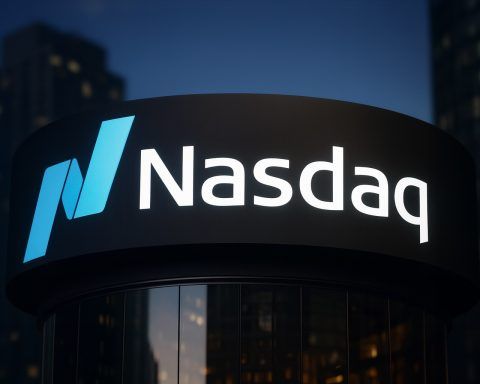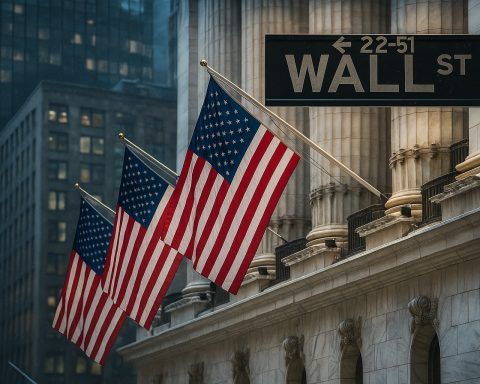The S&P 500 heads into the weekend at 6,602.99, up 1% on Friday, after one of the most volatile weeks of the year in which Federal Reserve rate‑cut hopes clashed with mounting fears of an AI‑driven stock market bubble. [1]
1. Where the S&P 500 Stands Now
Friday’s close sets the reference point for today, Saturday, November 22, 2025, with U.S. equity markets shut for the weekend:
- S&P 500: 6,602.99, +64.23 points (+0.98%) [2]
- Dow Jones Industrial Average: 46,245.41, +493.15 points (+1.1%) [3]
- Nasdaq Composite: 22,273.08, +0.9% [4]
- Russell 2000 (small caps): 2,369.59, +2.8% – the strongest daily move among the major U.S. indexes. [5]
Despite Friday’s upbeat finish, the week was still negative:
- The S&P 500 lost roughly 1.9% for the week (about 2% in Reuters’ tally). [6]
- The Dow also fell about 1.9%; the Nasdaq dropped 2.7% in its third straight weekly decline. [7]
- The Russell 2000 has now notched four consecutive weekly losses, its longest losing streak since March. [8]
Over a longer horizon the bull market is intact: year‑to‑date the S&P 500 is still up about 12.3%, with the Nasdaq leading (+15.3%), followed by the Dow (+8.7%) and Russell 2000 (+6.3%). [9]
In other words: the trend is still up, but the ride just got a lot rougher.
2. Fed Rate‑Cut Hopes Turn Friday’s Swings into a Late‑Day Rally
The catalyst for Friday’s reversal came from Santiago, Chile.
New York Fed President John Williams said in a speech that the central bank could “still cut rates in the near term” without jeopardizing its 2% inflation target, citing a cooling labor market and already‑restrictive policy. [10]
Markets seized on that phrase:
- The CME FedWatch tool shows the implied probability of a December rate cut jumping from roughly 39% on Thursday to around 60–70% on Friday, depending on the source. [11]
- As those odds spiked, the S&P 500, which had been bobbing around earlier in the session, surged nearly 2% at its intraday peak before settling with a 1% gain. [12]
The message from Williams was dovish, but not the last word. Other Fed officials, including Boston Fed President Susan Collins and Dallas Fed President Lorie Logan, argued for holding rates steady given sticky inflation, underscoring a clear split ahead of the December 9–10 policy meeting. [13]
This division is unfolding against an unusually messy data backdrop:
- A delayed September jobs report, held up by a long government shutdown, showed 119,000 jobs added, more than double the consensus forecast. [14]
- The unemployment rate climbed to 4.4%, the highest since October 2021, as nearly half a million people entered the labor force. [15]
That mix—slower but still positive job growth with rising unemployment—is exactly the kind of ambiguity that keeps the Fed arguing internally and markets lurching from headline to headline.
3. A Wild Week on Wall Street
Friday’s rebound came after what AP described as the sharpest intraday swings since April, with markets whipsawing around Fed speculation and an intense debate over whether AI‑related stocks have gone too far, too fast. [16]
Over the week:
- The S&P 500’s near‑2% loss and the Nasdaq’s 2.7% drop wiped out much of November’s earlier gains and left the tech‑heavy index about 7% below its October high. [17]
- Volatility spiked as traders digested massive swings in mega‑cap tech, a sharp sell‑off in cryptocurrencies and shifting bond yields. [18]
All 11 S&P 500 sectors still finished higher on Friday, but the pain earlier in the week was concentrated in information technology and consumer discretionary, which saw some of the steepest declines as investors rotated toward more defensive areas like healthcare, utilities and consumer staples. [19]
In short, breadth improved on the day, but the week told a story of a market re‑rating its most speculative corners.
4. AI Boom vs. Bubble: Nvidia, Oracle and the Valuation Shock
At the heart of the turbulence is the AI trade that has dominated the S&P 500 for nearly two years.
Nvidia: Strong earnings, weak stock
Chip giant Nvidia reported record fiscal Q3 revenue and a roughly 65% year‑over‑year surge in net income, reinforcing its status at the center of the AI hardware boom. [20]
Yet the stock reaction was telling:
- Nvidia shares fell sharply on Thursday and ended Friday down about 1%, leaving them roughly 5.9% lower for the week, even after the blowout numbers and upbeat guidance. [21]
- Reports that the Trump administration is considering allowing Nvidia’s advanced H200 AI chips to be sold in China gave the stock a brief intraday pop, but not enough to keep it positive. [22]
Investors appear to be asking a simple question: how much future AI profit is already priced in?
Oracle: Poster child for AI debt stress
Software and cloud heavyweight Oracle has become another focal point for AI anxiety:
- The stock tumbled about 5.7% on Friday, making it the worst performer in the S&P 500 that day. [23]
- Oracle shares are now more than 40% below their all‑time high from September, as markets digest over $100 billion in total debt and a massive AI data‑center build‑out, partly funded by an $18 billion bond sale. [24]
Reuters notes that pressure on Oracle’s bonds and growing demands from lenders for extra protection on loans to AI‑heavy tech firms are feeding fears of a debt‑fueled AI bubble, echoing patterns seen before past market busts. [25]
Market‑wide signals: High valuations, early‑stage bubble?
Several valuation gauges are now flashing bright yellow, if not outright red:
- The Buffett Indicator—total U.S. stock market cap versus GDP—has climbed above 200%, surpassing levels seen at the 2021 pandemic peak and even the dot‑com bubble. [26]
- The S&P 500 price‑to‑earnings ratio based on 12‑month forward estimates is around 23x, well above its 10‑year average near 19. [27]
- The Shiller CAPE ratio is also elevated, though still shy of past extremes. [28]
At the same time, sentiment is far from euphoric:
- The AAII retail investor survey shows bullishness around 38%, close to its long‑term average and well below the 75% peak seen in early 2000 or the 57% high during the meme‑stock craze of 2021. [29]
- The Nasdaq has roughly doubled in the three years since ChatGPT launched, a path that looks eerily similar to the early dot‑com run‑up – but without the same “everyone’s getting rich” mania. [30]
The takeaway from the latest Reuters analysis: if this is an AI bubble, it may still be in the early to middle innings, but valuations leave little room for disappointment. [31]
5. Beyond the Magnificent Seven: The “Humble 493” Are Pulling Their Weight
It’s not just the mega‑cap tech names driving S&P 500 earnings anymore.
According to Reuters Breakingviews, S&P 500 companies are on track for a fourth straight quarter of double‑digit profit growth, with aggregate net income up roughly 13% on 7% revenue growth in the most recent quarter. [32]
Key points from that analysis:
- The “Magnificent Seven” tech giants (including Nvidia and Alphabet) delivered about 18% earnings growth.
- The other 493 companies still managed about 12% earnings growth, and a growing share of them beat Wall Street estimates. [33]
- Ex‑financials, net profit margins near 13% are at a record high, highlighting big efficiency gains across sectors from airlines to industrials. [34]
But those numbers come with a warning:
- On current forecasts, the S&P 500 trades near 22x expected 2026 earnings, a rich multiple historically. If profits grow about 14%, valuations could compress to around 19x, closer to the long‑term norm—but only if margins stay near record levels. [35]
- If margins slip back toward historical averages—under pressure from tariffs, sticky inflation and a softer labor market—the “ex‑mega‑cap” portion of the index could find itself effectively trading above 20x earnings, even without the flashiest AI names. [36]
In other words, the breadth story is better than a year ago, but the valuation cushion is thin across the index, not just in Big Tech.
6. Macro Backdrop: Tariffs, Factories and a Cooling Job Market
The S&P 500’s path is also being shaped by a muddier macro picture.
Manufacturing slowdown
A new flash PMI reading showed that U.S. manufacturing activity slowed to a four‑month low in November, with the S&P Global manufacturing index dropping to 51.9 from 52.5 in October. [37]
Drivers:
- Tariff‑related price pressures are weighing on new orders as higher input costs filter into final prices.
- Inventories of unsold goods are piling up to record levels, a potential drag on future output if demand doesn’t re‑accelerate. [38]
The services sector, by contrast, remains resilient: the services PMI rose to around 55.0, reflecting steady demand for travel, leisure and business services despite higher prices. [39]
Jobs and the Fed’s dilemma
The delayed September jobs report paints a picture of a labor market that is loosening without collapsing:
- 119,000 jobs added vs. forecasts near 50,000.
- Unemployment up to 4.4%, the highest since 2021.
- Revised data show the economy added about 911,000 fewer jobs over the past year than previously reported, suggesting earlier strength was overstated. [40]
Because the government shutdown forced cancellation of the October jobs and inflation reports, the Fed will go into its December meeting with less than ideal data visibility, increasing the weight on survey‑based indicators like PMIs and consumer sentiment. [41]
For equity investors, this mix—slower growth, persistent inflation and a divided Fed—is exactly the recipe for the kind of volatility the S&P 500 just experienced.
7. Who Moved the S&P 500? Key Winners and Losers
Friday’s session featured a broad advance, but a handful of stocks stood out in both directions.
Big winners
According to Investopedia’s breakdown of “noteworthy S&P 500 movers”: [42]
- Ross Stores (ROST) jumped about 8.4% after beating Q3 sales and profit forecasts and offering upbeat commentary on the holiday season.
- Gap, Intuit (INTU) and Ross all rallied strongly following earnings, with Intuit gaining about 4% as its revenue outlook topped expectations.
- Insulet (PODD) climbed roughly 5.8% after its investor day, supported by a stronger multi‑year growth forecast for its diabetes devices.
- Housing‑sensitive names such as Builders FirstSource (BLDR) and homebuilders D.R. Horton (DHI) and Lennar (LEN) benefitted from the rate‑cut narrative as lower mortgage rates would ease pressure on the housing market.
In the mega‑cap complex:
- Alphabet rose about 3.5%, Apple gained roughly 2%, and Meta Platforms added close to 0.9%, helping power Friday’s late‑day resurgence. [43]
- Eli Lilly briefly became the first drugmaker in history to touch a $1 trillion market cap, driven by explosive demand for its weight‑loss medications, before closing up around 1.6%. [44]
Notable laggards
On the downside: [45]
- Oracle (ORCL) sank 5.7%, extending a steep multi‑week slide and crystallizing investor unease about AI‑funded debt.
- Nvidia, Broadcom (AVGO) and AMD all finished lower as traders reassessed AI chip valuations after massive gains earlier in the year.
- Nuclear‑power names Vistra (VST) and Constellation Energy (CEG), which had been big beneficiaries of data‑center‑driven power demand, also pulled back amid broader AI‑bubble concerns.
Zooming out, these moves underscore how AI winners and losers now heavily shape the daily rhythm of the S&P 500, even as traditional sectors like retail, housing and healthcare quietly contribute meaningful earnings growth.
8. What Today’s Setup Means for S&P 500 Investors
As of today, November 22, 2025, the S&P 500 sits at a crossroads defined by three overlapping stories:
- Fed policy uncertainty
- Market odds now lean toward a December rate cut, but the Fed is publicly divided and key data are incomplete because of the shutdown. [46]
- Every speech, interview and leaks around the Fed’s December meeting is likely to trigger outsized moves across both stocks and bonds.
- An AI‑supercharged, high‑valuation market
- The AI boom has pushed valuation metrics into historically stretched territory, even as retail sentiment stays surprisingly subdued. [47]
- Cracks in bellwether names like Nvidia and Oracle show that markets are starting to differentiate between profitable AI leaders and over‑levered aspirants.
- Broad but fragile earnings strength
- The “Humble 493” are making meaningful contributions to profit growth, but record margins and tariff‑driven cost pressures mean that any macro slowdown could quickly challenge today’s lofty multiples. [48]
For anyone tracking the S&P 500, the implications are clear:
- Expect continued sharp day‑to‑day swings, especially around Fed communications, AI‑centric earnings updates and incoming macro data.
- Watch for signs that breadth is improving or deteriorating—for example, whether gains remain concentrated in a few mega‑caps or spread more evenly across financials, industrials and small caps.
- Keep an eye on holiday‑season data: with Black Friday and year‑end shopping underway, consumer‑discretionary results will be critical for confirming or challenging current earnings forecasts baked into S&P 500 valuations. TechStock²+1
This article is for information and news purposes only and does not constitute investment advice or a recommendation to buy or sell any security.
References
1. apnews.com, 2. apnews.com, 3. www.reuters.com, 4. apnews.com, 5. apnews.com, 6. apnews.com, 7. apnews.com, 8. www.reuters.com, 9. apnews.com, 10. www.reuters.com, 11. www.investopedia.com, 12. www.nujournal.com, 13. www.reuters.com, 14. apnews.com, 15. apnews.com, 16. apnews.com, 17. www.reuters.com, 18. www.investopedia.com, 19. www.reuters.com, 20. www.reuters.com, 21. www.reuters.com, 22. www.reuters.com, 23. www.investopedia.com, 24. www.investopedia.com, 25. www.reuters.com, 26. www.reuters.com, 27. www.reuters.com, 28. www.reuters.com, 29. www.reuters.com, 30. www.reuters.com, 31. www.reuters.com, 32. www.reuters.com, 33. www.reuters.com, 34. www.reuters.com, 35. www.reuters.com, 36. www.reuters.com, 37. www.reuters.com, 38. www.reuters.com, 39. www.reuters.com, 40. apnews.com, 41. apnews.com, 42. www.investopedia.com, 43. www.reuters.com, 44. www.reuters.com, 45. www.investopedia.com, 46. www.reuters.com, 47. www.reuters.com, 48. www.reuters.com









